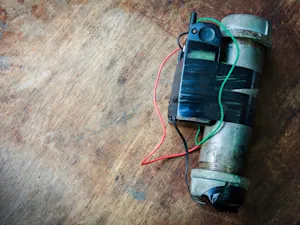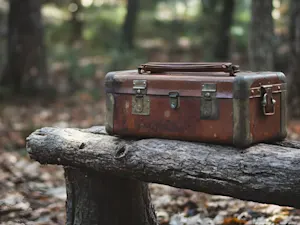
Stranded in Sewage: Inside the 'Poop Cruise' Meltdown
There's a reason you've heard of the "poop cruise."
Even more than a decade later, the name alone can trigger memories of floating chaos, biohazard bags, and headlines that dominated the news cycle for days. But how did a relaxing four-day cruise from Texas turn into a floating disaster zone that's now immortalized in a Netflix documentary?
Let's revisit what really happened aboard the Carnival Triumph in February 2013 — not with jokes or exaggeration, but with a closer look at the facts, the failures, and the fallout.
Setting Sail With a Problem Below Deck
The Carnival Triumph left Galveston, Texas, on Feb. 7, 2013, headed for Cozumel, Mexico. On board were more than 4,000 passengers and crew members looking forward to a typical getaway cruise. But beneath the decks, things were already shaky. The ship had only four of its six diesel generators running — and one of the remaining units, diesel generator No. 6, had a documented history of overdue maintenance and unresolved safety risks.
Carnival had known for over a year that several of its ships — including the Triumph — had recurring fuel line issues that had caused fires on other vessels. After a similar incident aboard the Costa Allegra in 2012, the company discovered that flexible fuel lines posed a fire hazard. Carnival issued a fleet-wide compliance order in January 2013, instructing all ships to shield exposed fuel lines within two months.
The Triumph set sail just weeks after that directive — and not all the safety measures were yet in place. According to Carnival, the hose that ended up sparking the fire was located beneath deck plates and assumed to be protected by them.
Disaster at Sea
On the morning of Feb. 10, a fire broke out in generator No. 6 after fuel sprayed from an unshielded hose. Though the blaze was extinguished and no one was injured, the power loss disabled propulsion, plumbing, lighting, and air conditioning. The ship was left adrift, slowly drifting northward in the Gulf of Mexico.
Without working toilets, human waste quickly backed up. The crew began handing out red biohazard bags for passengers to use instead. One traveler, Bettina Rodriguez, told CNN, "Just on our deck alone, there were the biohazard bags lined up across the floor. We're talking about raw sewage at just the end of our deck alone. It was repulsive."
Conditions deteriorated rapidly. Passengers were forced to sleep outside under makeshift tents of bathrobes and bedsheets. Bottled water and food became limited, leading some to hide their rations to avoid theft. Joy Dyer, a passenger aboard the ship, texted her husband to say, "Still having to use showers and sinks as toilets – floating waste is all over the place. Slick floors are usually human waste overflows. Smell is rank," according to The Guardian.
Reports of rising tensions and looting added to the panic. Passengers described confrontations over dwindling supplies and a rising fear that help might not arrive in time.
A Media Frenzy and a New Nickname
While Triumph drifted helplessly, the media pounced. News helicopters hovered above, broadcasting live footage of passengers waving for help. Media boats even tried to approach the vessel to get closer shots. "Saturday Night Live" opened with a skit poking fun at the situation — solidifying the nickname of the "poop cruise," according to The Daily Beast.
The ship was eventually met by tugboats and towed back to shore, arriving in Mobile, Alabama, late on Feb. 14, far behind the initial timeline passengers had been given.
Carnival issued an apology and offered a full refund, $500 cash, reimbursement for travel, and a "future cruise credit." But that did little to erase the trauma or the smell, according to The Guardian.
What Carnival Knew — and What It Didn't Fix
Carnival's internal documents, later obtained by CNN, painted a worrying picture. The ship had been sailing with a diesel generator known to be overdue for maintenance. And the fire that disabled Triumph appeared eerily similar to earlier incidents — the very ones that prompted the January compliance order.
Frank Spagnoletti, a Houston attorney representing multiple Triumph passengers, claimed, "That ship never should have set sail in February. It was unseaworthy at the commencement of the voyage," according to CNN.
Despite this, Carnival maintained that the Triumph had passed inspections by the U.S. Coast Guard and Lloyd's Registry just two weeks earlier. The company asserted that they were in full compliance with maritime regulations.
The Aftermath and Industry Response
In response to the disaster and its publicity fallout, Carnival invested $300 million in a fleet-wide overhaul aimed at improving engine room safety and backup power systems.
The company also rolled out a 110% "Great Vacation Guarantee," promising dissatisfied guests a full refund — plus transportation home.
However, in its legal filings reported by CNN, Carnival emphasized that its passenger ticket contract "makes absolutely no guarantee for safe passage, a seaworthy vessel, adequate and wholesome food, and sanitary and safe living conditions."
A Legacy of Laughter and Lawsuits
Even today, the term "poop cruise" can summon memories of chaos and catastrophe. Netflix's new documentary, "Trainwreck: Poop Cruise," revisits the event through first-hand accounts and new footage, reigniting public fascination.
For some, it's a joke that won't die. For those who were there, it was a lesson in what can go wrong when safety is overlooked at sea.
Cruises are still among the most popular vacations in the world — but thanks to what happened aboard the Triumph, no one forgets to ask where the backup power is.
References: Netflix Will Traumatize You With Deep Dive Into Poop Cruise | CNN Exclusive: Carnival Knew of Fire Danger Before Cruise, Documents Show | Carnival Triumph: Toilets Overflowing as Stricken Ship Limps Towards Port























